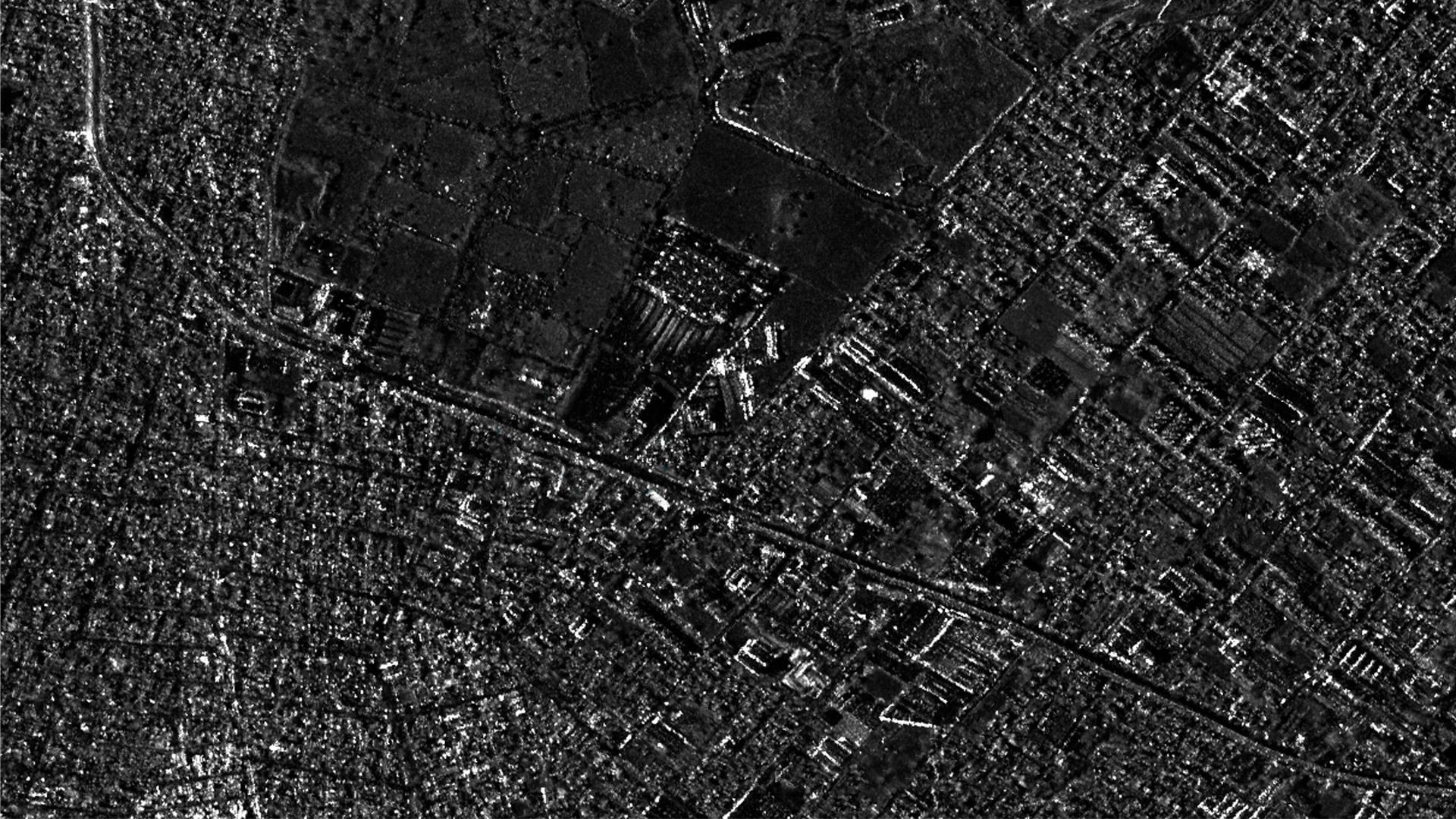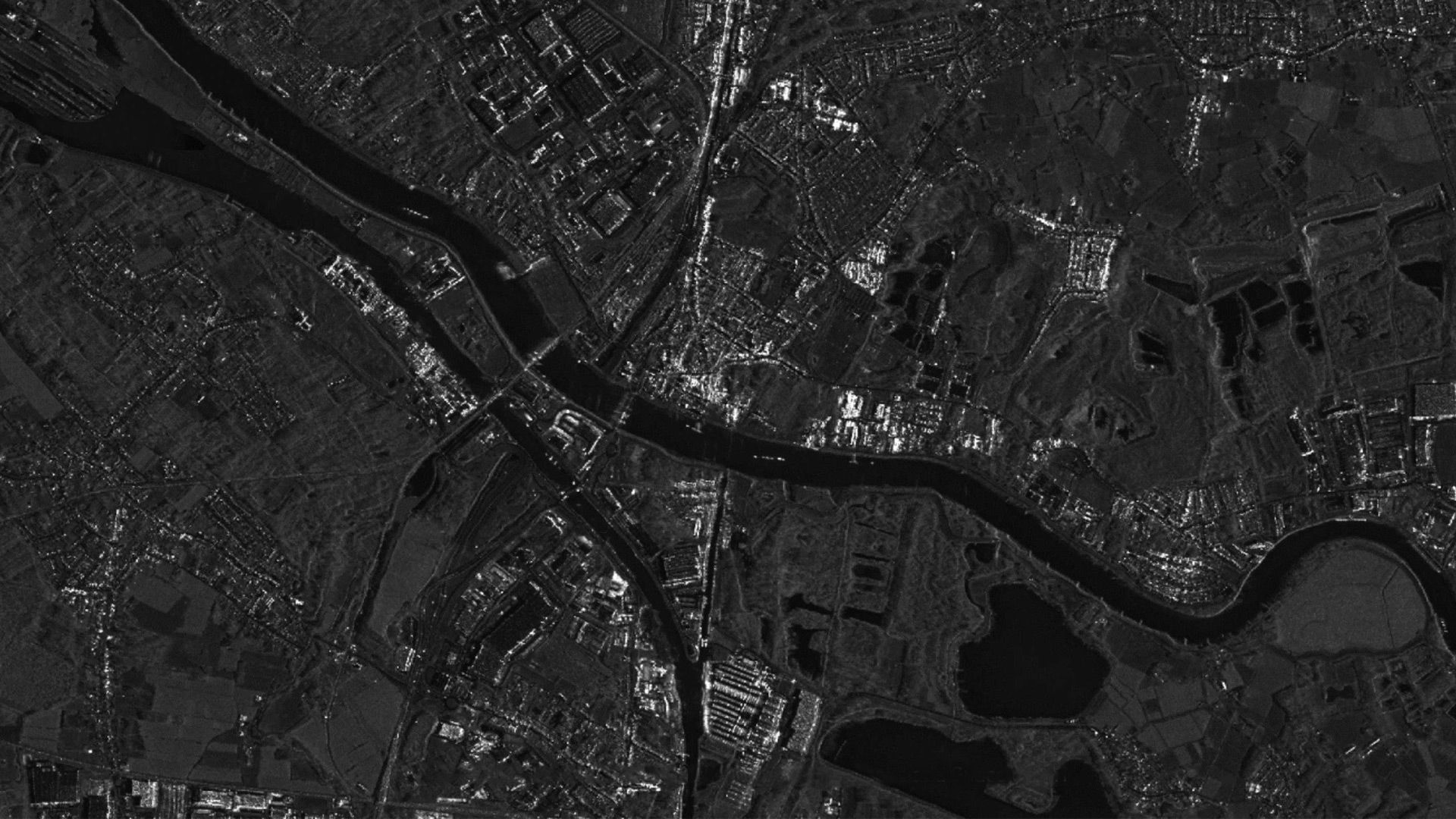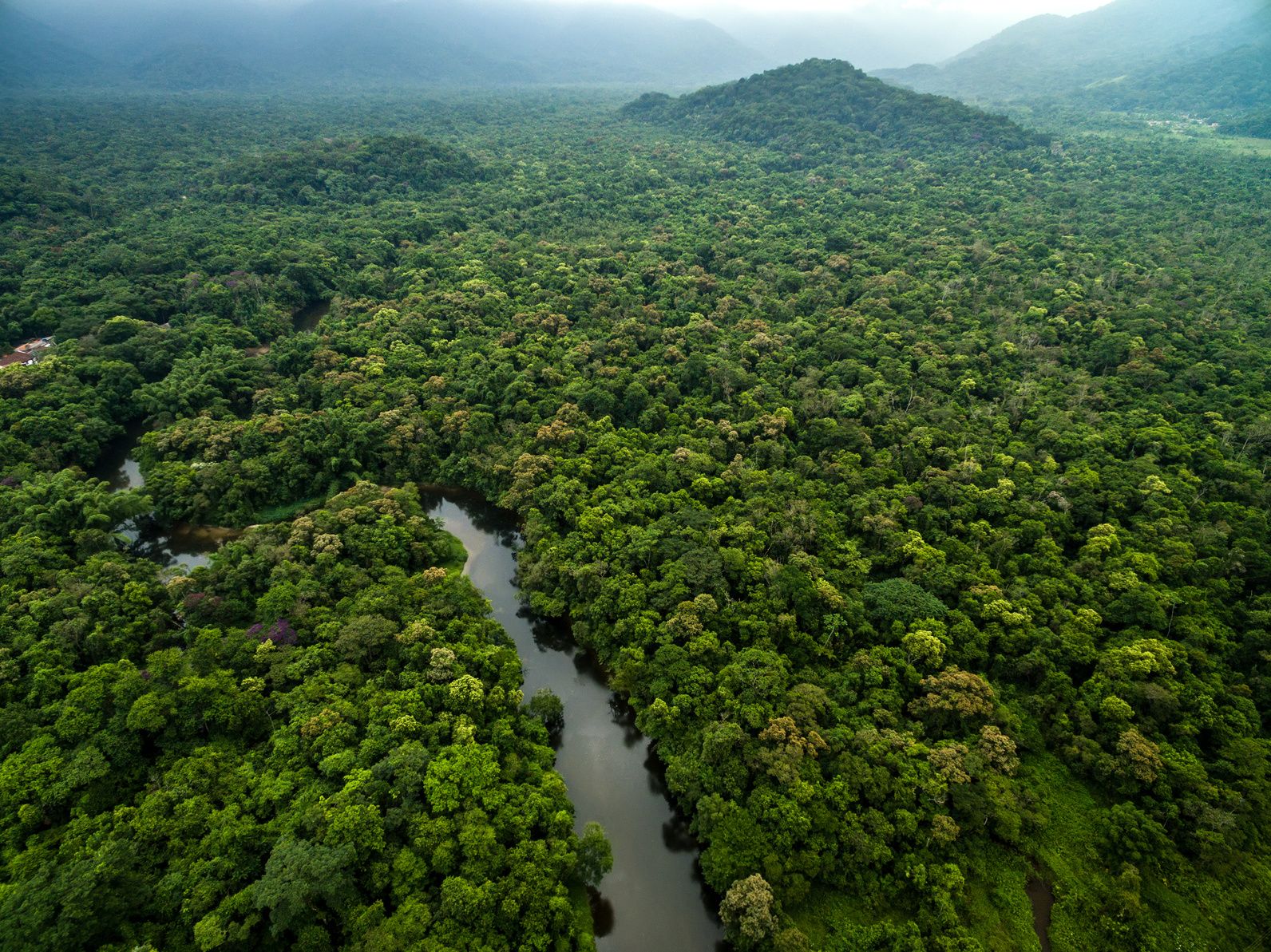
Home
Newsroom
Case Studies
Pléiades Neo
High-Resolution Seafloor Mappi...
High-Resolution Mapping and Monitoring of Coastal Environments
From Space with Pléiades Neo and EOMAP
Map the gap with EOMAP!
Pioneering the field of satellite-derived bathymetry and aquatic Earth Observation, EOMAP supports both industry and governments. The international team has successfully completed hundreds of projects which improved the knowledge, surveying and management of coastal zones and aquatic environments.
About EOMAP:
- Established in 2006 with HQ in Germany and offices in Australia, USA, UAE and Indonesia,
- Advancing the field of aquatic Earth Observation as decades of EOMAP’s data and software solutions continually support operational routines of industry clients and the decision making of environmental governmental agencies.
Dilemma of bathymetry:
- Shallow water zones are of highest importance for navigation, benthos, coastal protection and coastal zone management
- Shallow water zones are dynamic and require continuous observation
- Surveying bathymetry by vessel or plane entails high costs and risks, as well as time constraints.
EOMAP’s Satellite-Derived Bathymetry solves the dilemma: It allows unique access to historic (30 years) and ongoing seabed changes, which generates dense bathymetric grids from shoreline down to depth of 25m (1x Secchi Disc Depth).
Smart monitoring, planning and decision making for projects in the coastal and nearshore regions requires spatial and temporal understanding of the environmental parameters. Man-made dredging activities, beach nourishments and erosion processes shape both shallow water bathymetry and coastline. Dubai’s coastal zone - like many others on Earth - is affected by these changes. Mapping and monitoring of the current situation and its development over time is a great challenge for conventional vessel-based survey methods: It would require significant efforts on equipment and costs - not to mention the complexity of surveying the very shallow waters by vessels. Satellite data analytics help to overcome this data and information gap and allow for a rapid assessment and improvement of the management on site.


EOMAP's multi-source bathymetric grid for the Gulf region. A composite of most recent satellite-derived information, charts and survey data. (c) EOMAP, 2022
The beauty of satellite data becomes obvious once you check real-colour imagery of the very-high resolution satellite data of Pleiades Neo and others, spatial data in high level of detail.
But how to analyse satellite data without having local survey or calibration data?
EOMAP overcame this remote sensing challenge by developing precise models of the light interaction with atmosphere, water column properties and other environmental effects (inverse radiative transfer models).
In short: The EOMAP solution can provide reliable information on shallow waters in Dubai (as shown here) and for any other site in the world, without the need of on-site survey data.
Thanks to the Pléiades Neo constellation the spatial level of detail is excellent and bathymetric surface of 0.3m to 1.3m are possible. Furthermore, the capability to record coastal sites on demand allows for regular updates.
In collaboration with Airbus Defence and Space, EOMAP monitored shallow water dynamics and trends for Dubai.
The Very High Resolution bathymetric grids of the shallow waters for selected dates allowed the comparisons below:
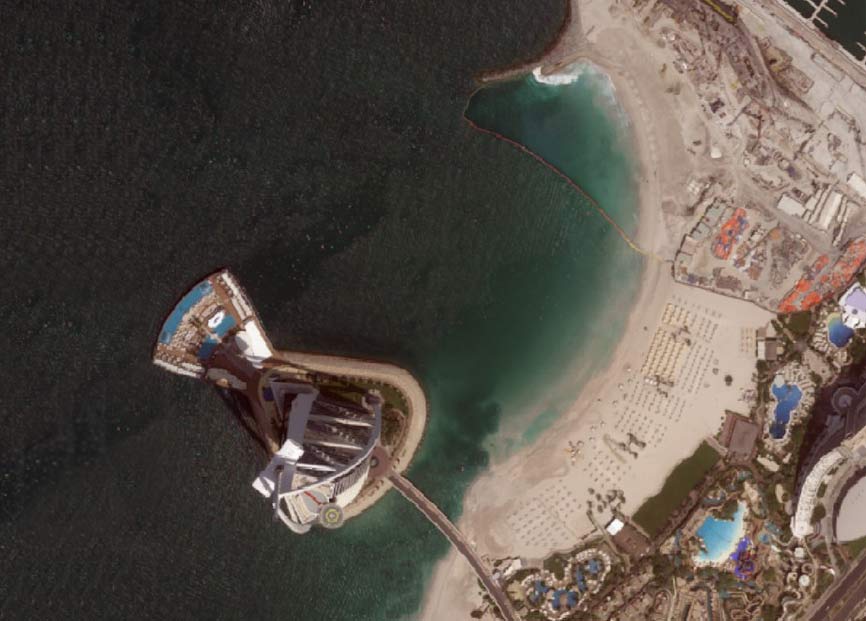
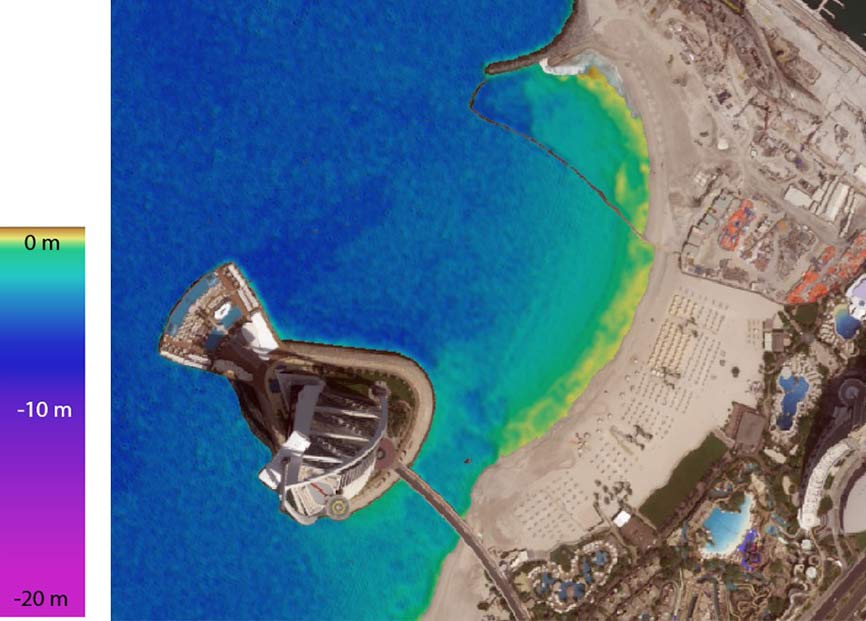
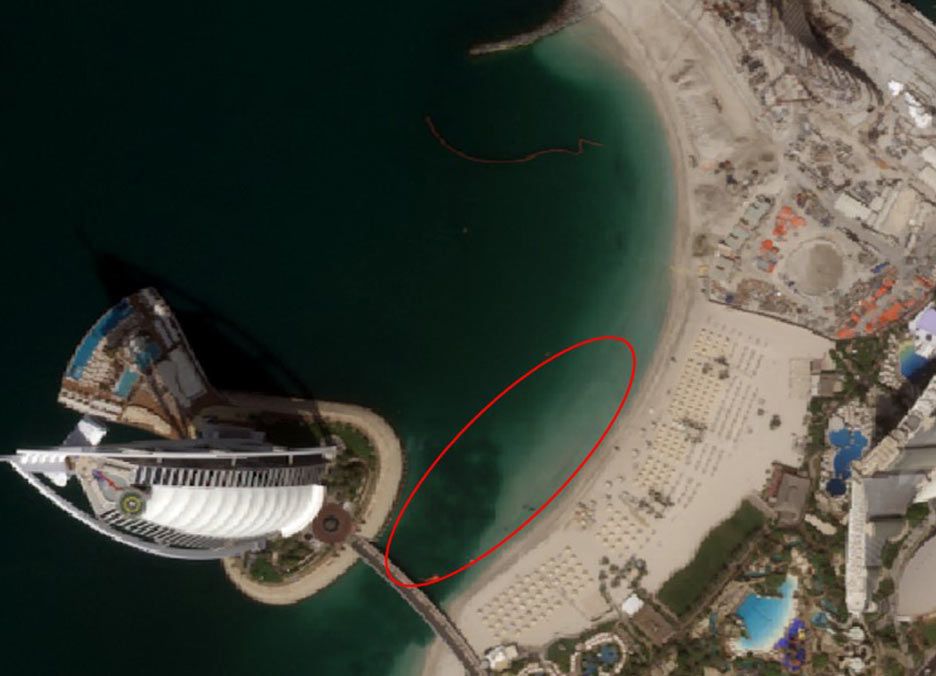
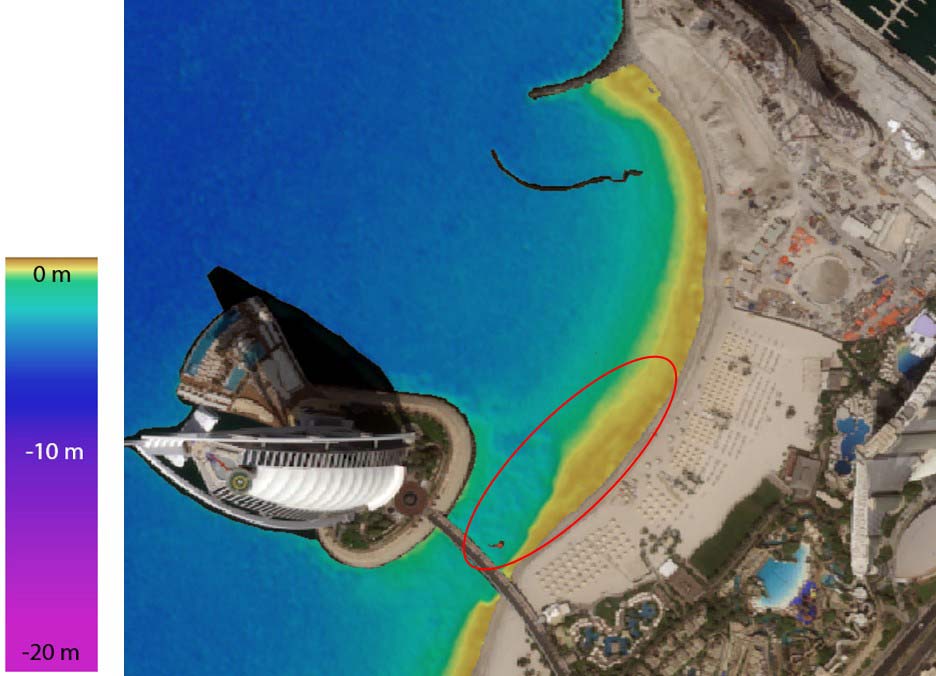
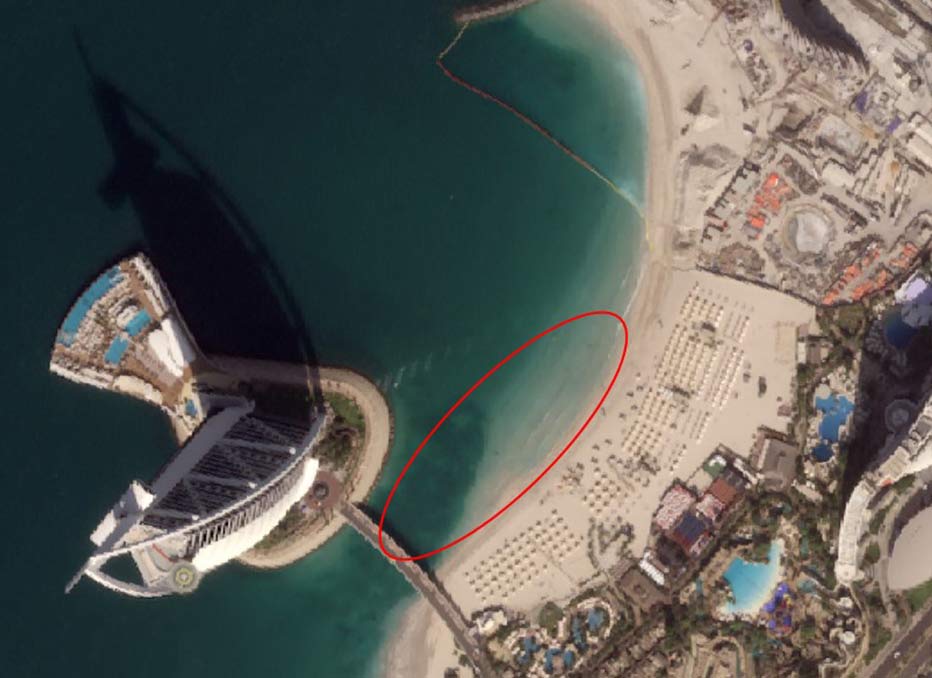
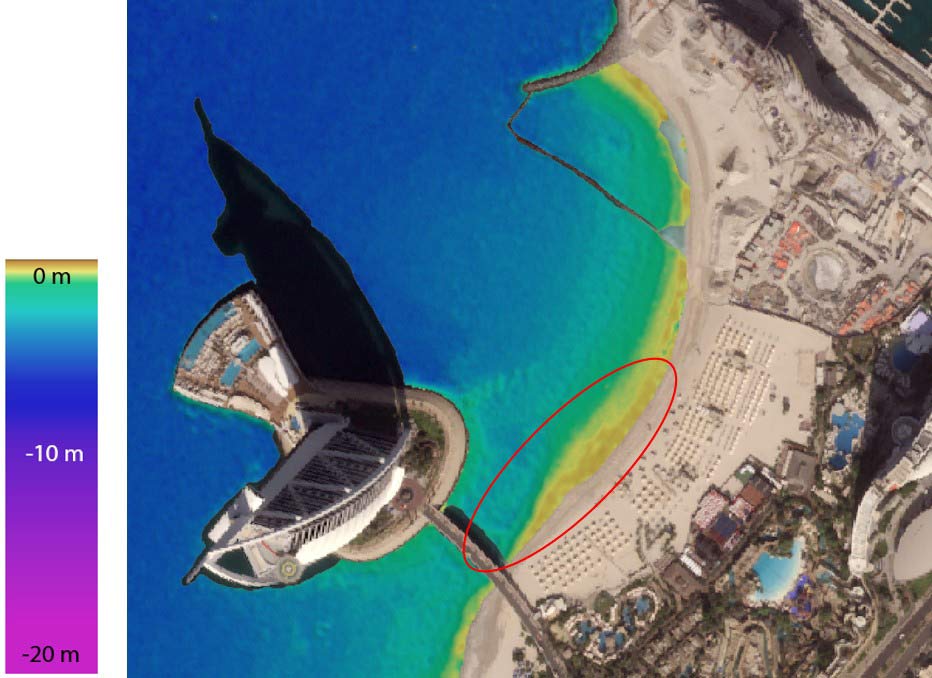
From a time series analysis of VHR multispectral satellite data back to 30 years, EOMAP’s experts quantified the shoreline changes and erosion rates.

Shoreline change from Sept to Nov 2021 as observed by Pléiades Neo satellite data analytics
Pléiades Neo and EOMAP for coastal and aquatic mapping
- Rapid and spatial
Access to very high resolution bathymetric grids and supplement information on seafloor habitats and shoreline development
- Very high resolution
Better precision and dense information content compared to Pléiades or other 4-band VHR sensors
- Reduced uncertainties of derived products
Compared to standard 4-band VHR sensor
- Pléiades Neo has qualified as an additional sensor to be embedded into EOMAP’s services
Satellite-Derived Bathymetry, Water Quality, Shoreline erosion studies, Digital Elevation Models, etc

Organisation involved
EOMAP provides high quality satellite-derived data products and software services for a panoptic view on coastal and inland waters. Via a better understanding of this crucial environment, the international team wishes to contribute to a sustainable management. Founded in 2006, EOMAP has its headquarters near Munich, Germany and maintains offices in Australia, USA, Indonesia and in the United Arab Emirates.
Authors

Chief Operating Officer - EOMAP
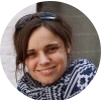
Head of Water Quality - EOMAP
Want to know more?
Our sales team will be happy to provide you more information about this case study and how it can meet your business needs.

